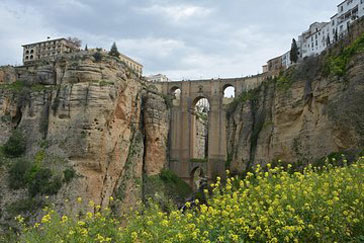
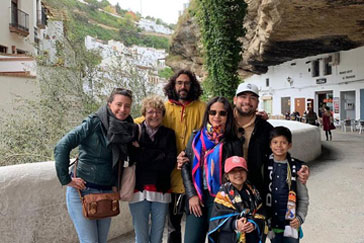
The pictures above are copied from advertisements enticing tourists to sign up for tours to Ronda. Who could resist wanting to see the scene in the picture on the left? Certainly not me. Unfortunately, tours don't actually go to this vantage point because to reach it you have to park your car in a very small lot and walk a considerable distance.
I didn't learn about this misrepresentation until after I selected a small group tour that was supposed to leave from a plaza near our hotel. Shortly after booking I received a series of confusing emails announcing changes to the pick-up spot, the time, and even the day of the tour. I thought about cancelling, but I had already paid and I suspected that getting my money back would be a frustrating experience.
On the day of the tour Walt and I arrived early in the plaza that had been designated as the new pick-up location. After about half an hour of waiting, Jerry and Annie, a couple about the same age as us from Chicago, showed up. I introduced myself and we chatted as we waited some more. By the time our somewhat scruffy looking guide Alonzo (the tall guy in the picture on the right above) finally roared up in a decrepit old van, Walt and Jerry were grumbling together in a companionable way and I felt like Annie and I were old friends.
Alonzo remarked on how great it was that the four of us were Americans - He was sure we would get along well because we were from the same country. How little he understands about the many issues that sharply divide Americans these days, I thought.
We soon found ourselves racing down the highway at an alarming rate of speed. Alonzo had an unnerving habit of staring out the side window for long moments although he was driving the car. The van rattled and shook. Walt and Jerry and Annie and I exchanged stories about places we had travelled and our experiences in Spain, and occasionally we asked Alonzo questions about the landscape that was flying by outside the windows. Finally, against all odds, we arrived safely in Ronda. I had expected to see a small village, but it was actually more of a city. We pulled into a municipal parking lot, walked quickly down a steep and slippery street, and found ourselves in a sort of park called Alameda del Tajo which offers an incredible scenic view of the mountains around the town.
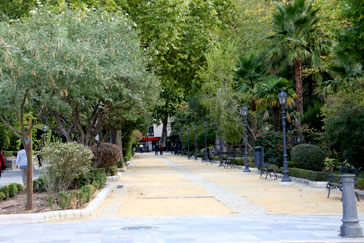
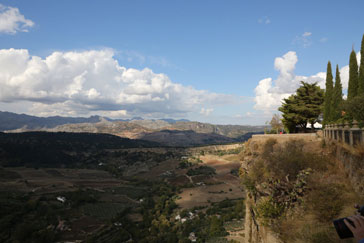
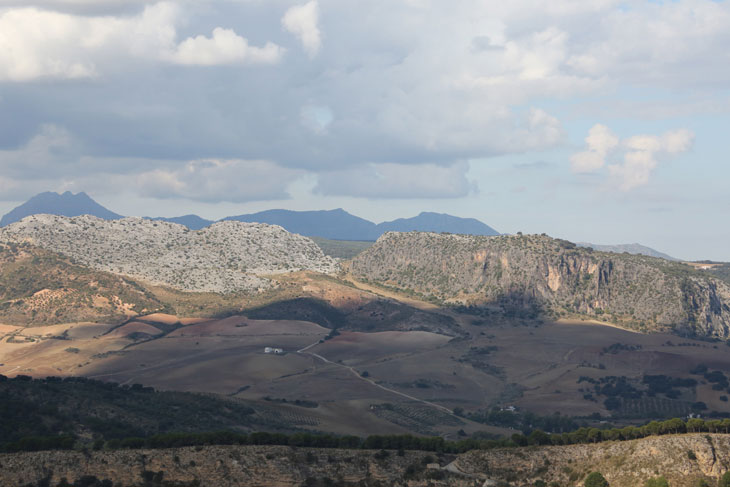
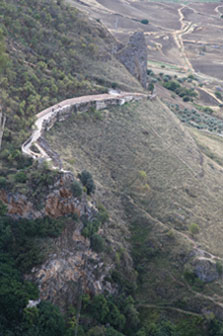
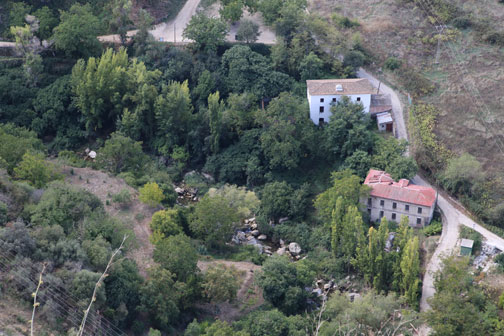
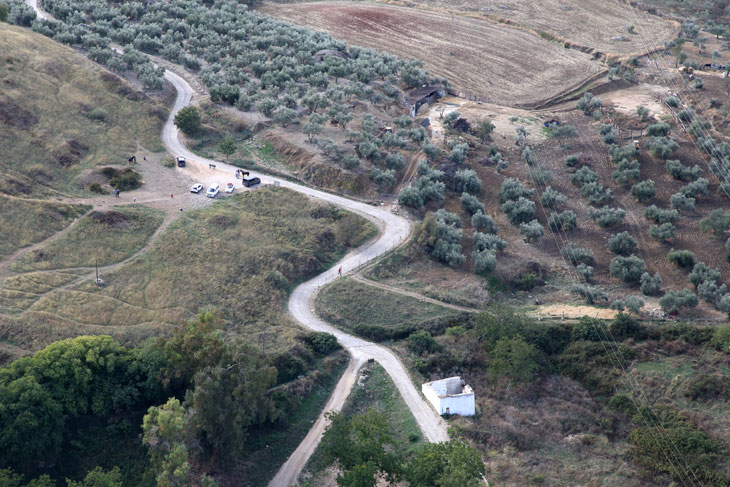
Our next stop was the Plaza de Toros de Ronda, the city's bullring and museum. Although some regions of Spain, like Catalunya, have banned bullfighting, it is very much a part of the culture of Andalusia, the region we were now visiting.
Bullfights are still held here occasionally, but the rest of the time the ring and the museum are open to tourists. Alonzo sent us off into the complex with instructions to follow the marked pathways. In this way, we could follow the route the bull takes when he enters, he said.
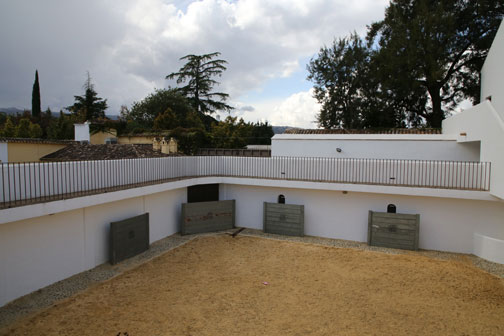
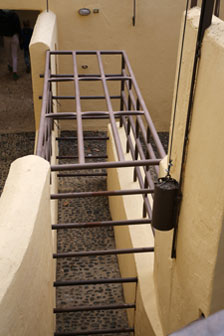
The bullring is also home to Spains's oldest and most noble order of horsemanship called the Real Maestranza de Caballeria de Ronda. This is where the horses and students practice.

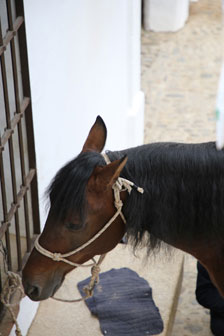
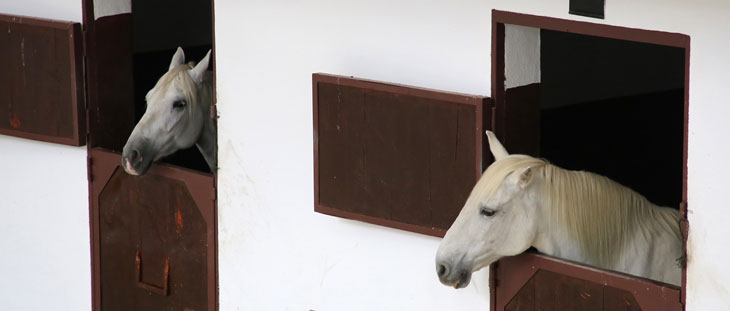
These are some of the items in the museum.
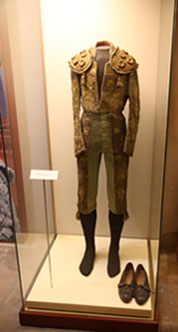
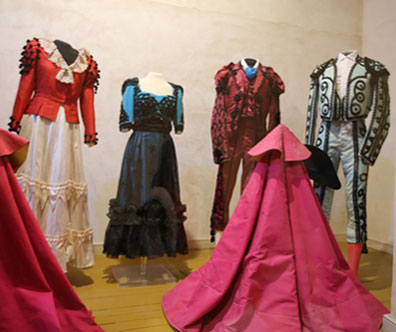
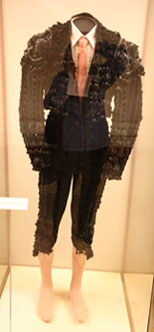
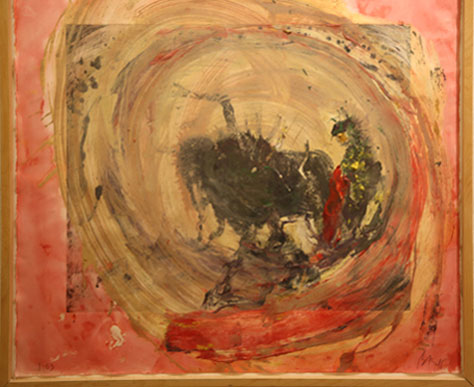
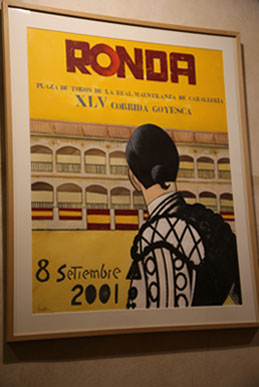
The actual bullring was completed in 1785. Unlike other bullrings, it is constructed entirely of stone and all of the seating is under cover.
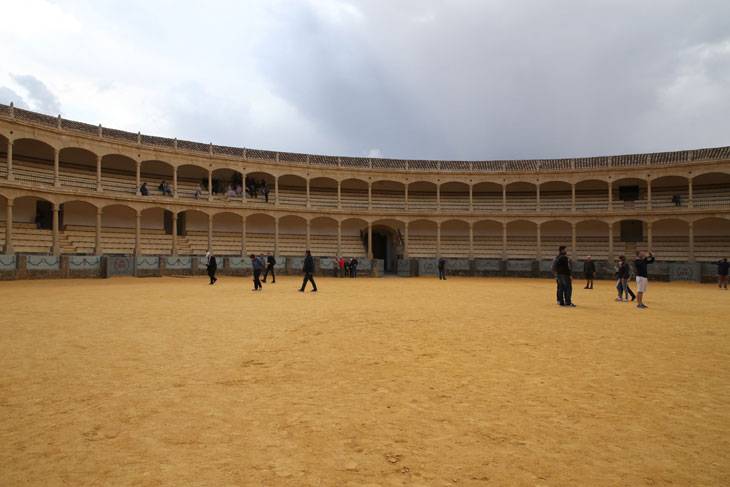
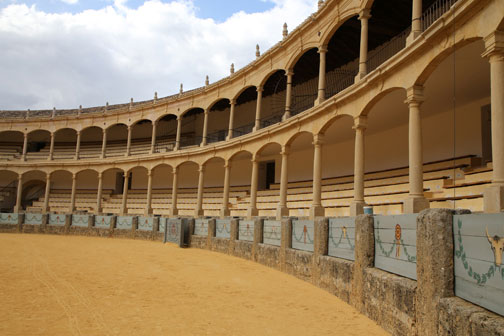

If the Spanish royal family is in attendance, they sit in the section of the stands pictured on the right.
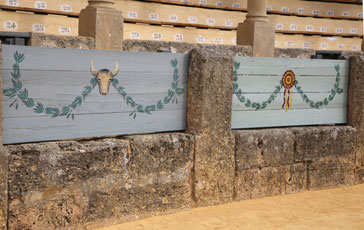
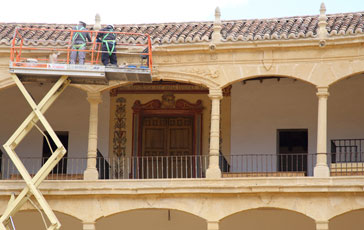
A statue of a bull stands outside the museum. I also noticed this interesting door latch nearby.
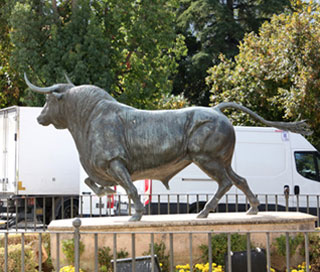
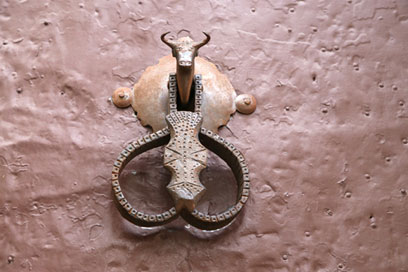
There are actually three bridges in Ronda. We headed next to a lookout near the Puente Nuevo which was completed in 1793 after over 40 years of construction. The bridge that crossed the gorge in this location before the building of the Puente Nuevo had collapsed six years after it was completed killing about 50 people who happened to be crossing it at the time. In case you don't recognize it, this is the bridge pictured at the top of the page - the picture taken from a much more interesting viewpoint that is too difficult for tour groups to access.
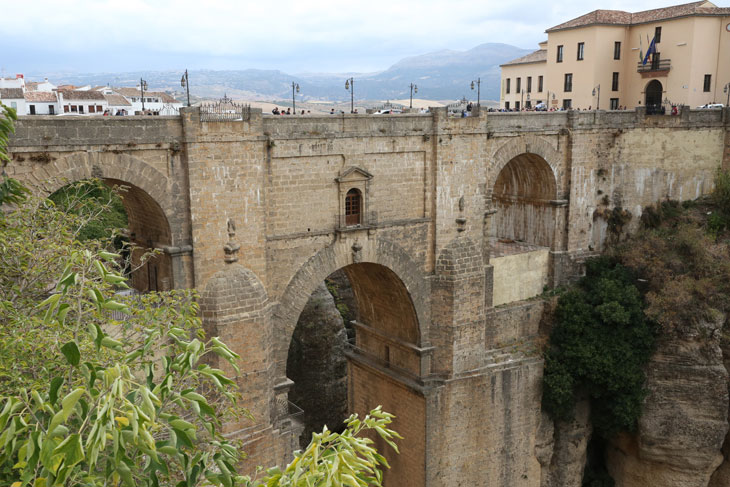
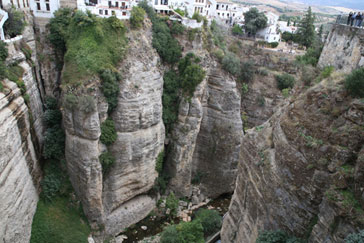
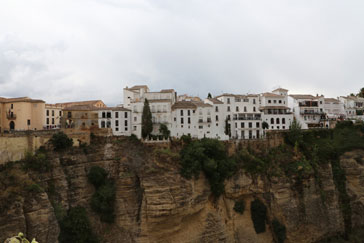
If you look further down the gorge from this vantage point, you can see the Puente Viejo built in the 16th century.
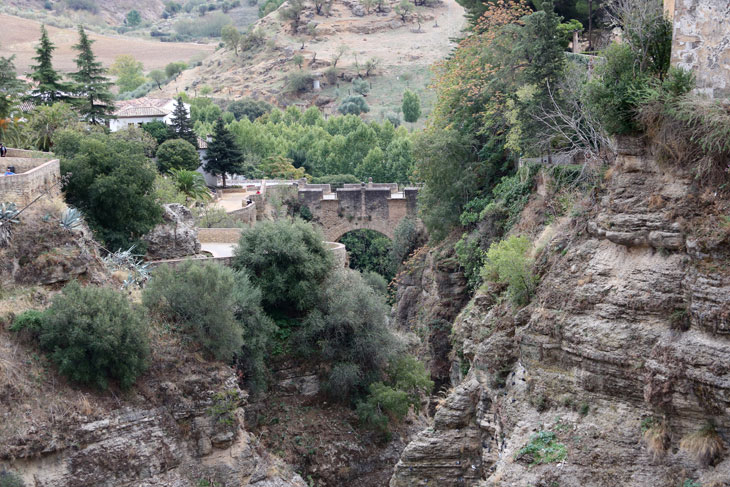
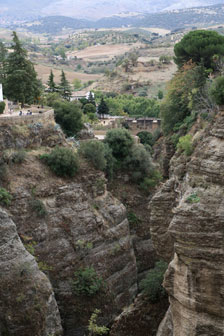
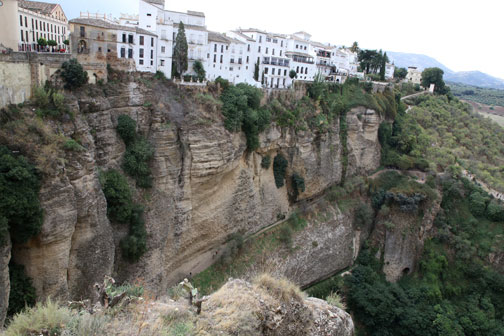
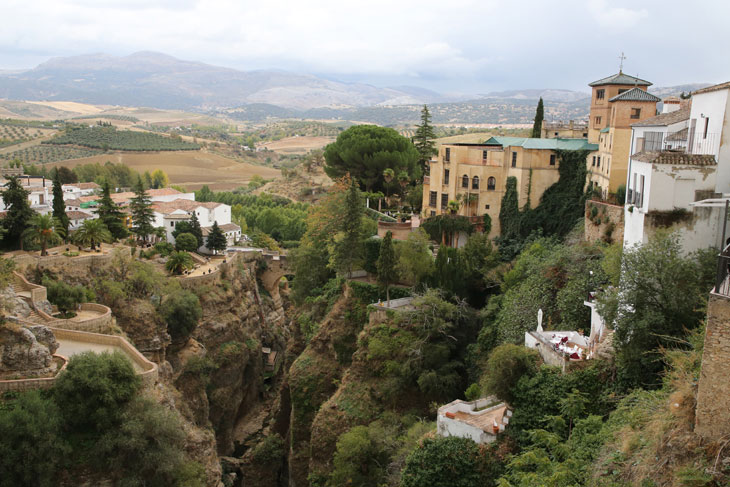
The oldest bridge in the city once stood in the other direction up the gorge. Some call it the Arab Bridge because it sits near the old Arab Baths and others call it the Roman Bridge because it might have been built back in the days when the Romans controlled this area. Unfortunately, any resemblance to its original form has been lost because it has been repaired so many times over the centuries. You can also see the remains of the Arab Baths in this picture, and I think that's a section of the old city walls.
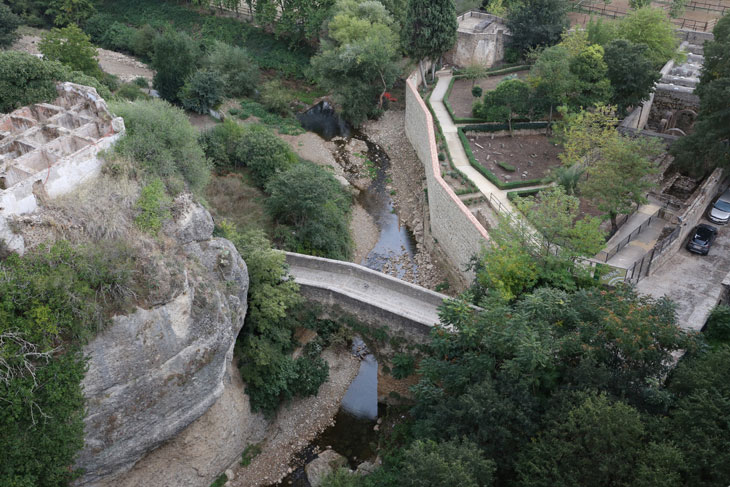
The clouds had been rolling in, the temperature was dropping, and the rain was beginning to fall, but the tour description promised admission to two museums in Ronda and Alonzo seemed determined to make it so. He led us down a very steep cobbled street which was rapidly becoming more slippery as the rain fell. Jerry and Walt refused to go further, but Annie and I gamely followed.
Our intended destination was the Arab Bath Museum. Built in the late 12th or early 13th century, the baths sat just outside the city walls. Visitors and locals would stop here to purify themselves before entering the nearby Mosque. Unlike Roman baths which offered pools of hot water for soaking, these were steam baths. Users proceeded through a series of rooms of various temperatures. Benches and cushions lined the walls creating an atmosphere conducive to socializing, and trained slaves provided massages and therapeutic treatments.
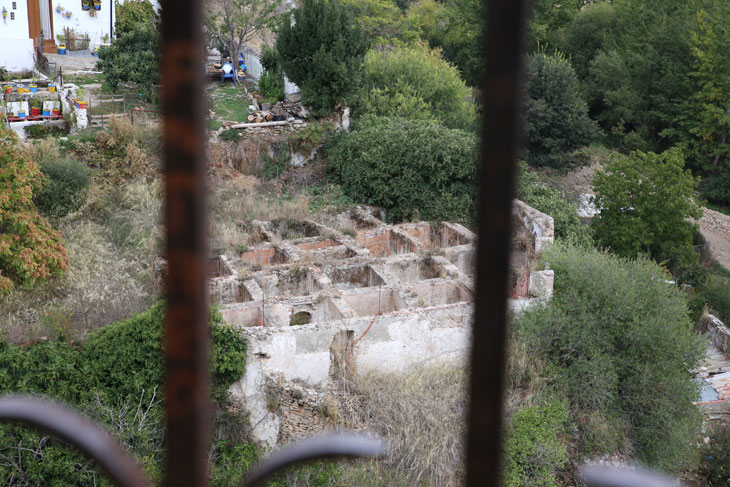
We watched a short interesting movie about the baths before huffing and puffing our way back up the treacherous streets. Then Alonzo shoehorned us into a tiny table in a small, crowded cafe where we had a snack and chatted while Jerry grumbled good-naturedly about Annie and I going down to the museum. When I mentioned the movie, he protested that we could have probably watched it on YouTube from the comfort of our homes. True, I thought, but I had also enjoyed being inside the ancient rooms. I wondered why he bothered to travel if he truly felt that way. Why didn't he just stay at home and watch shows about other people's journeys?
As we sat in the cafe, the rain intensified and the termperature dropped even lower. I dreaded the walk back to the van which would surely involve more steep, slippery streets, but Alfonzo took pity on us and went to get the van himself. Or perhaps it was as Jerry said - Alonzo decided it was quicker and easier to just get the van himself.
Back in the van, we raced on to the incredibly charming village of Zahara de la Sierra which Alonzo said was the most beautiful village in Spain. Although the weather was quite nasty by now, you could see that the village had its charms. It was built on a large hill, and the van threatened to stall repeatedly as it made the arduous climb to the parking lot at the top. I feared for my life as we roared through the narrow passage between two stone walls pictured on the left below and into the parking lot.
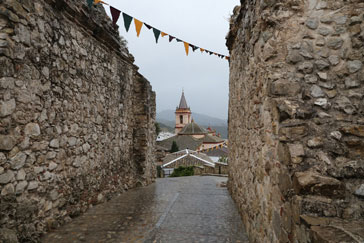
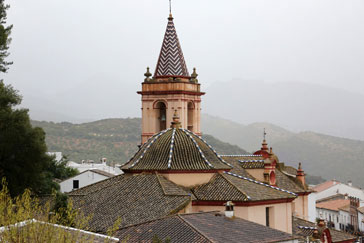
The villages in this part of Spain are known for the predominance of white houses. The picture on the right shows the ruins of the 13th century castle that sits on the very top of the hill.
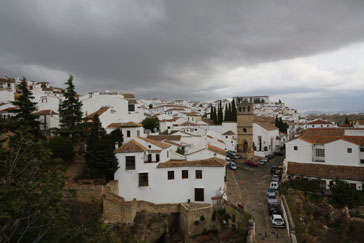
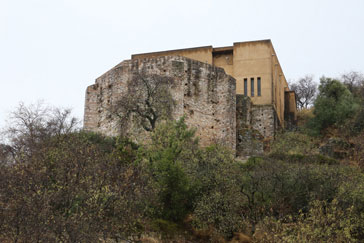
The viewpoint overlooks a large reservoir.
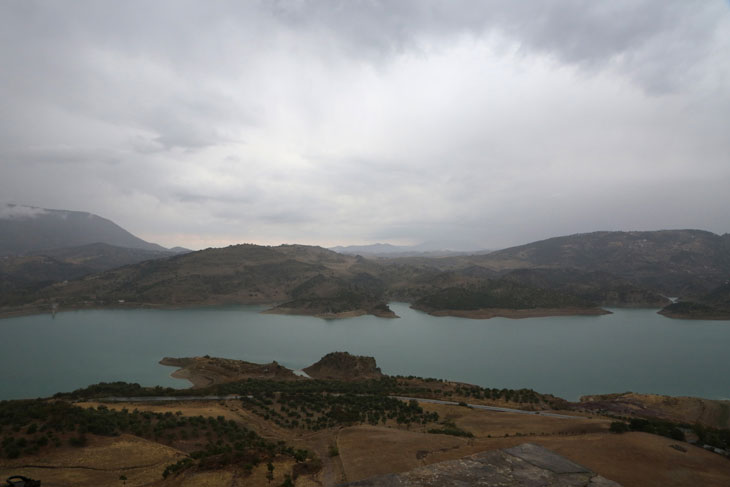
After a cup of tea to warm up accompanied by some of the local pasteries, we made a mad dash back to Sevilla. In spite of the fact that Ronda was quite different than I had expected and that Zahara de la Sierra had hidden its beauty behind the clouds and rain, but we had mostly enjoyed ourselves. Perhaps one day we'll return to view the Puente Nuevo from that dramatic angle and to enjoy Zahara de la Sierra on a sunny day.